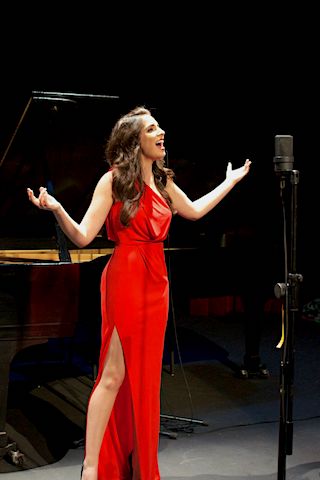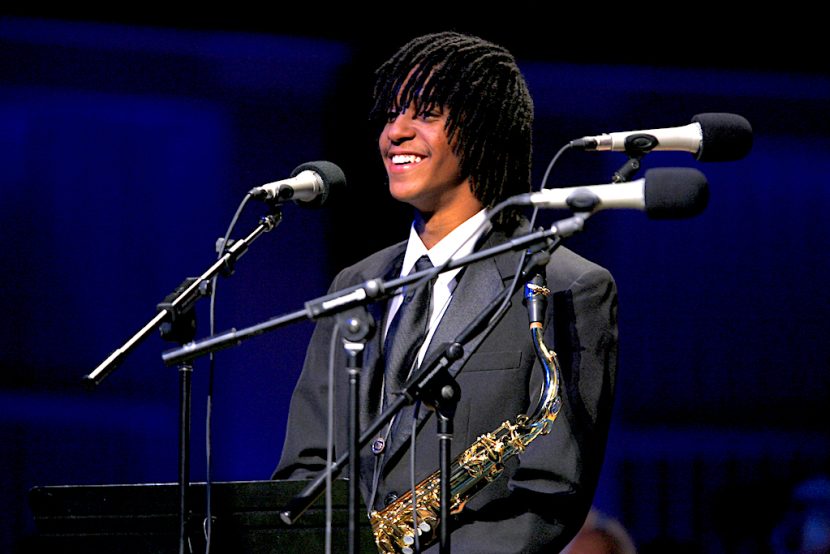Stage presence is an essential aspect of an enjoyable and memorable audience experience.
Observations of recitals of pre-college and college musicians, however, suggest that this vital element of musicianship is often missing in the education of young performers. Training in music school facilitates immense musical growth, and students spend years in practice rooms refining their technical and artistic skills. However, the end goal of a performance may be forgotten: effectively communicating to an audience.
Visual cues
Nonverbal communication (body language) accounts for the majority of how we process a message conveyed to us by another person. Recent studies show a significant link between the visual cues a performer gives the audience and the audience’s overall takeaway regarding the quality of the performance.
All of these provide information to your audience and affect their perception of the performance:
• The stage set up
• Your entrance on stage
• Your level of confidence as perceived by the audience
• Your attire
• Your physical expression and movement within the performance
• Interaction between performers on stage
Music is still the top priority. We prepare for a performance with the expectation that audiences are coming to listen. But, whether or not they realize it, our audiences are conditioned to crave more than sound: they want an experience. Though the repertoire is the main event, the energy we project serves as a pivotal ingredient that enhances or detracts from the experience as a whole.
The good news: stage presence is a skill you can practice and refine. By following a few basic guidelines, you’ll gain the confidence needed to effectively communicate with your audience.
Performance stage set up
• Know the basics of the setup appropriate for your performance, from the position of the piano relative to the audience, to where to be placed as a soloist, so that you can communicate with your pianist (or ensemble partners) and the audience.
• How are you setting up your music and accomplishing page turns?
• Are there distractions on stage that could detract from your performance?
Attire
• The clothing you perform in should be appropriate to the event type, location, season, venue temperature, and time of day.
• Your performance attire can impact your level of physical comfort. Consider your comfort level if you’re planning to wear bowties or neckties, jackets, stiletto heels, off-shoulder or shoulder straps.
• Practice your entire performance in your performance clothing. It’s psychologically reassuring to know that you have rehearsed every element of your performance.
Your entrance on stage
• What side of the stage will you enter from? How will you make it to your place on the stage? With some venues, you may even be walking through the audience to get to the stage!
• For ensembles, what order will you walk on stage, and who will initiate the bow? Will you exit the stage in between selections?
Welcoming your audience
Your posture, facial expression, eye contact, and pacing all provide nonverbal cues to the audience as you walk on stage. They indicate your level of excitement in welcoming guests to listen to your performance.
I encourage musicians to walk with a calm confidence that projects ease. Show at least a hint of a smile –– or to at least be aware of what your face is projecting! Make some eye contact with the audience before you bow.
Before the day of your performance, try taking a video of yourself walking on stage.
Observe your:
• Pace entering and exiting the stage – is it hesitant, rushed, or relaxed? Can you walk comfortably in your attire and shoes?
• Posture and eye contact – what do they communicate?
• Facial expression – is it nervous, stiff, or friendly?
Also look to see how you:
• Acknowledge the audience while walking on and off stage
• Handle your instrument and accessories as you enter/exit
• Acknowledge your audience with eye contact and a bow before setting up
Your bow
Bowing has traditionally been associated with greetings and farewells. It’s also a display of respect and/or gratitude. It continues to be an expectation for classical performances. Consider it your way of greeting the audience and expressing your gratitude for their support.
Talking to your audience
Performers are opting to speak directly to the audience in place of or in addition to providing program notes. Here are a few tips on speaking at a performance.
1. Come to a full stop at stage center. Wait for applause to die down before you start speaking.
– If you have a tendency to fidget or rock, try clasping your hands together, holding them at waist height.
– If using a microphone, consider holding it with both hands.
– Stand tall and think about rooting your feet into the ground.
2. If you are the concert organizer (especially if it is a special event), greet the audience and share a little about the occasion, program, and performers.
– You may also use this time to remind the audience to turn off cell phones and smart watches and to clarify your policy on photos and recording.
3. If you’re new to public speaking, you may tend to talk quietly and rush your words. In a larger venue, speak out louder and more slowly than you think you need to in order to be heard. Finish your thoughts as opposed to trailing off. If you’ve started a sentence but can’t think of what to say next, restate your most recent point as an assertive concluding statement.
4. Standard works by well-known composers typically don’t require an introduction. However, if you are presenting an unusual work or contemporary selection, sharing some insight can really help the audience’s appreciation. You might want to include:
– A few interesting facts about the life of the composer
– Context of the piece – and what to listen for
– A short conclusion along the lines of “I hope you enjoy this work”
At the end of the performance
We don’t always have the best sense of how our performance went, especially immediately afterward. No matter how you think it went, it is important to stay in character as a performer. Bow with gratitude, smile, and walk offstage with a calm presence. If your audience is still clapping, don’t take too much time before returning for a subsequent bow.
If there is a meet-and-greet after the performance, take time to really listen to your fans and hear what they enjoyed. Thank them for their support and focus on the positive. Even if there was room for improvement, your performance may have been a very meaningful experience for members of the audience. If they feel moved to speak with you, accept their praise with gratitude and humility.
Owning your stage presence
There is no cookie-cutter style of stage presence that works for everyone. The energy in your walk, gaze, and bow should be a reflection of your personality and style. Whether or not you are a professional performer at this point in your life, your goal is to present yourself in a manner that transmits self-respect as well as respect for your audience. Good luck, and have fun with this!
Elizabeth Borowsky, MM Piano Performance, Indiana University Jacobs School of Music, is a pianist, composer, educator, speaker, and recording artist. She is executive director of the International Music Institute and Festival USA and presents workshops on a variety of topics to enhance performance skills, including stage presence.
Photo Credits: Top – Mark Lyons; Lower – NPR/From the Top



Leave a Reply